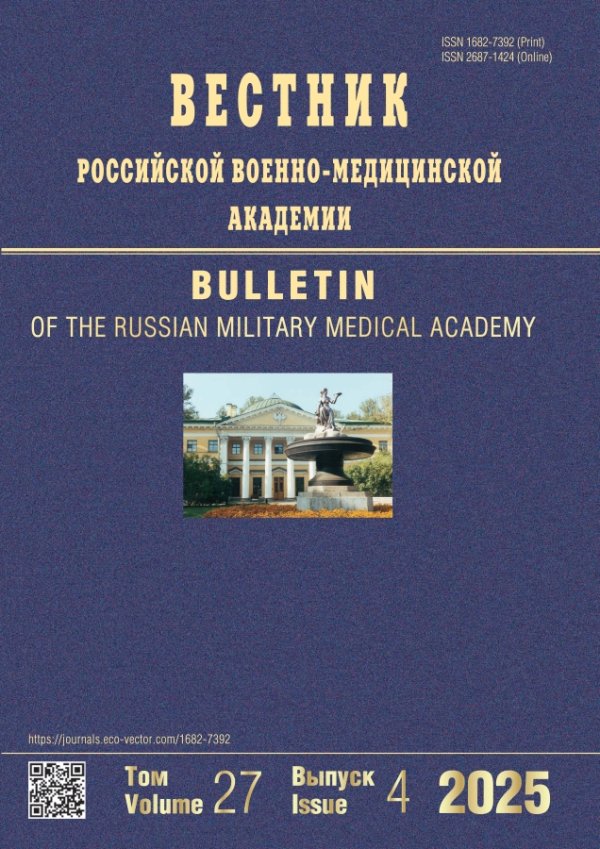Влияние различных видов нагрузок на качество пространственного ориентирования и операторской деятельности операторов авиационного профиля
- Авторы: Благинин АА1, Синельников СН1, Ляшедько СП1
-
Учреждения:
- Военно-медицинская академия им. С.М. Кирова
- Выпуск: Том 20, № 2 (2018)
- Страницы: 99-104
- Раздел: Статьи
- URL: https://journals.rcsi.science/1682-7392/article/view/12269
- DOI: https://doi.org/10.17816/brmma12269
- ID: 12269
Цитировать
Полный текст
Аннотация
Полный текст
Открыть статью на сайте журналаОб авторах
А А Благинин
Военно-медицинская академия им. С.М. КироваСанкт-Петербург
С Н Синельников
Военно-медицинская академия им. С.М. КироваСанкт-Петербург
С П Ляшедько
Военно-медицинская академия им. С.М. Кирова
Email: lyashedko.semen@gmail.com
Санкт-Петербург
Список литературы
- Благинин, А.А. Возможности компьютерной стабилографии в оценке функционального состояния организма опера- торов авиакосмического профиля с различной статоки- нетической устойчивостью при вестибулярной нагрузке / А.А. Благинин [и др.] // Воен.-мед. журн. - 2016. - № 8 (337). - С. 51-57.
- Благинин, А.А. Медицинские аспекты безопасности полетов / А.А. Благинин, И.Н. Лизогуб // Воен.-мед. журн. - 2017. - № 4 (338). - С. 51-56.
- Благинин, А.А. Методы исследований в психологии и физио- логии труда: учебно-методическое пособие / А.А. Благинин [и др.]. - СПб.: ЛГУ им. А.С. Пушкина, 2012. - 252 с.
- Благинин, А.А. Оценка функционального состояния орга- низма летчика с помощью компьютерной стабилографии в условиях статокинетических нагрузок / А.А. Благинин, И.И. Жильцова, О.А. Анненков // Вестн. Росс. воен.-мед. акад. - 2014. - № 2 (46). - С. 210-214.
- Благинин, А.А. Современное состояние и проблемы трени- ровки пространственной ориентировки летчиков / А.А. Благинин, С.Н. Синельников, С.П. Ляшедько // Авиакосм. и эколог. медицина. - 2017. - № 1 (51). - С. 65-69.
- Благинин, А.А. Способ моделирования пространственной дезориентации летчика / А.А. Благинин, С.Н. Синельников, С.П. Ляшедько // Усовершенств. способов и аппаратуры, применяемых в учебн. проц., медико-биолог. исслед. и клинич. практике. - СПб.: ВМА, 2016. - С. 12.
- Жильцова, И.И. Компьютерная стабилография как метод оценки функционального состояния военнослужащих / И.И. Жильцова // Мор. мед. журн. - 2002. - № 3-4. - С. 26-29.
- Лапа, В.В. Психофизиология безопасности полетов / В.В. Лапа, В.А. Пономаренко, А.В. Чунтул. - М.: Ассоциация журналистов, пишущих на правоохранительную тематику, 2013. - 396 с.
- Методики исследований в целях врачебно-летной экспертизы: пособие для членов ВЛК / под общ. ред. Е.С. Бережнова, П.Л. Слепенкова. - М.: Издательский дом академии имени Н.Е. Жуковского, 1995. - 455 с.
- Николайкин, Н.И. О необходимости и возможности снижения воздействия человеческого фактора на безопасность по- лётов / Н.И. Николайкин [и др.] // Crede Experto: транспорт, общество, образование, язык. - 2017. - № 2. - С. 201-218.
- Пономаренко, В.А. Психология авиации. Т. 2 / В.А. Понома- ренко. - М., 2015. - С. 11-19.
- Реброва, О.Ю. Статистический анализ медицинских данных. Применение пакета прикладных программ STATISTICA / О.Ю. Реброва. - М.: МедиаСфера, 2002. - 312 с.
- Руководство по обучению в области человеческого фактора. - Изд. 1-е. - М.: ИКАО, 1998. - 368 с.
- Скворцов, Д.В. Стабилометрическое исследование / Д.В. Скворцов. - М.: Мера-ТСП, 2010. - 171 с.
- Munnings, A. Environmental factors that affect the Fukuda stepping test in normal participants / A. Munnings [et all] // J. Laryngol. Otol. - 2015. Vol. 129. № 5. Р. 450-453.
- Wiegmann, D.A. A human error analysis of commercial aviation accidents using the human factors analysis and classification system (HF ACS) / D.A. Wiegmann, S.A. Shappell // U.S. Department of Transportation. Federal Aviation Administration. Washington, D.C., 2011. - P. 12-14.
Дополнительные файлы







